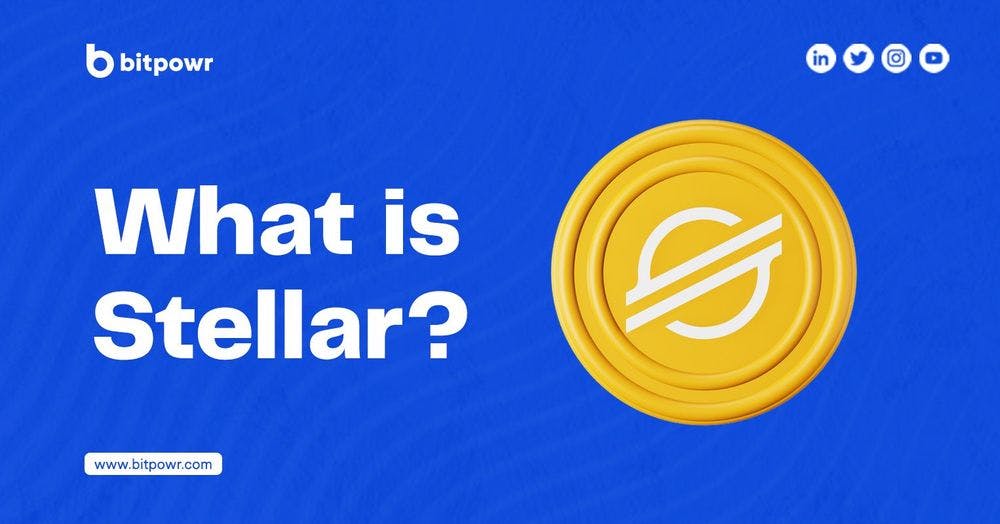Stellar is an open-source, decentralized payment protocol that facilitates cross-border transactions between any pair of currencies. The company behind the protocol, also called Stellar, was founded in 2014 by Jed McCaleb and Joyce Kim. The Stellar protocol is supported by a non-profit organization, the Stellar Development Foundation (SDF), which aims to promote financial access and inclusion.
The native cryptocurrency of the Stellar network is called Lumens (XLM). Lumens are used as a bridge currency to facilitate transactions between different currencies on the network. They also serve as a means of anti-spam protection by requiring a small fee to be paid in Lumens for each transaction.
Stellar has received funding from a variety of sources, including Stripe, a payments company, and FastForward, a non-profit organization that supports open-source projects. In addition, the SDF has received funding from the likes of BlackRock and Google.
Stellar’s mission is to connect people to low-cost financial services to fight poverty and develop individual potential. The organization aims to make it possible for people to transact with each other without the need for intermediaries, like banks, and to create a more inclusive global economy.
How it Works
The Stellar network uses a consensus algorithm called the Stellar Consensus Protocol (SCP). SCP is based on the Federated Byzantine Agreement (FBA) model, which allows for fast and efficient transactions while maintaining a high level of security. SCP uses a network of validators responsible for verifying and confirming transactions on the network. This allows for quick confirmation times, typically just a few seconds.
The Stellar protocol uses a consensus algorithm called the Stellar Consensus Protocol (SCP) to verify transactions on the network. This algorithm is based on a federated Byzantine agreement (FBA) model, which allows for faster and more efficient consensus than traditional proof-of-work or proof-of-stake algorithms.
What are its different uses?
One of the main use cases of the Stellar network is as a cross-border payment system. The network allows for fast and efficient money transfers between individuals and businesses in different countries, with low transaction fees. The network also supports the issuance of digital assets, such as tokens, which can be used for a variety of purposes, such as raising funds for a project or representing a company’s stock.
Here are several other use cases of Stellar
- Cross-border payments: The Stellar protocol allows for fast and efficient cross-border transactions between any pair of currencies. This can help to reduce the cost and complexity of international payments, especially for individuals and small businesses.
- Remittances: The Stellar protocol can be used to facilitate remittances, which are money transfers from one country to another. This can be particularly useful for migrant workers who want to send money back to their home countries.
- Microfinance: The Stellar protocol can be used to provide microfinance services, which are small loans to individuals or small businesses. This can help to promote financial inclusion and support economic development in underbanked communities.
- Mobile money: The Stellar protocol can be used to facilitate mobile money transactions, which allow individuals to store, send, and receive money using their mobile phones. This can be particularly useful in countries where many people do not have access to traditional banking services.
- Digital identity: The Stellar protocol can be used to create and manage digital identities, which can be used for a variety of purposes, including voting, financial transactions, and accessing government services.
- Tokenization: The Stellar protocol can be used to create, issue, and trade tokens or assets, which can represent a variety of things like loyalty points, rewards, or even stocks.
- Decentralized Exchange: The Stellar protocol can be used to create decentralized exchanges (DEX) that enable users to trade assets in a trustless and decentralized environment.
The Future of stellar
In the future, Stellar hopes to expand the use of its network beyond just financial services and to be used in other industries such as supply chains, voting systems, and more. With its fast and efficient transaction processing, low fees, and support for a wide range of digital assets, the Stellar network is well-positioned to become a key player in the blockchain and cryptocurrency space.
Bitpowr recently announced the integration of Stellar Trustline Asset into our platform. unlike any other blockchain, Stellar’s uniqueness is becoming more noticeable. On Bitpowr, you can now enable and transact with Stellar Trustline Asset for more security and as a better option for your customers. Reach out if you need help getting started using Stellar for your business, we are happy to help.




